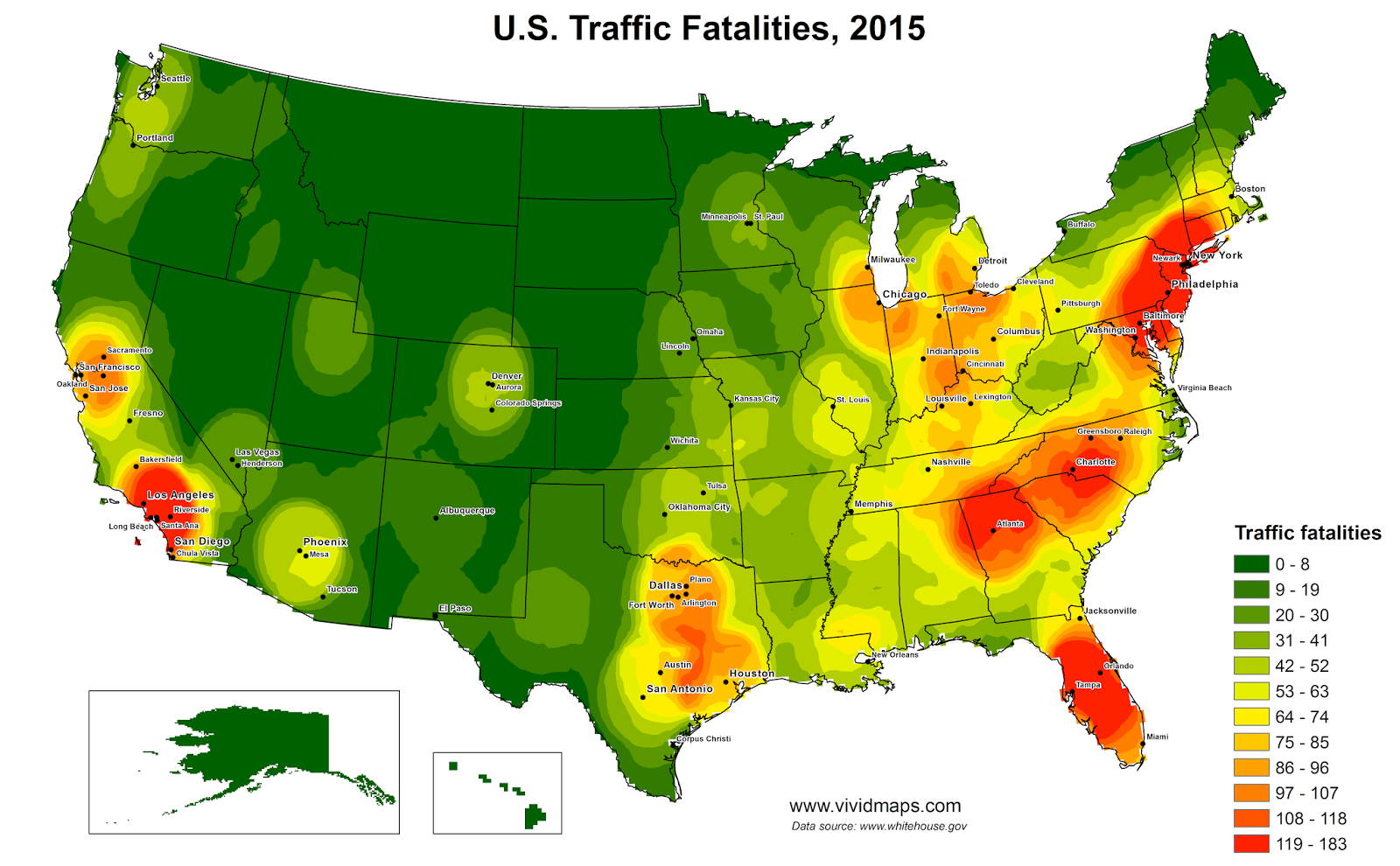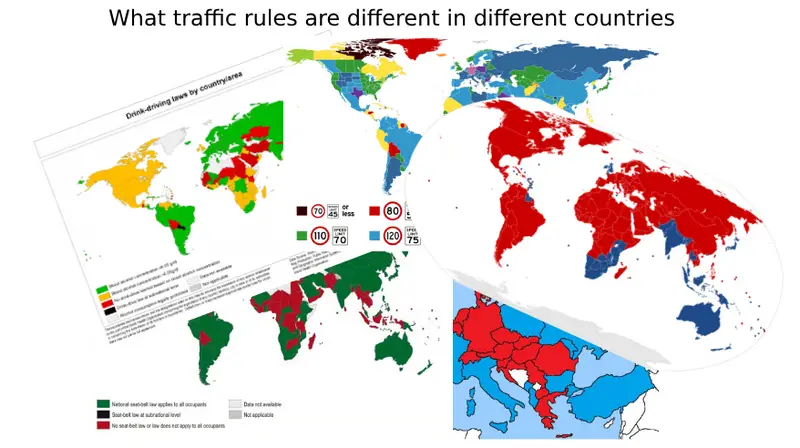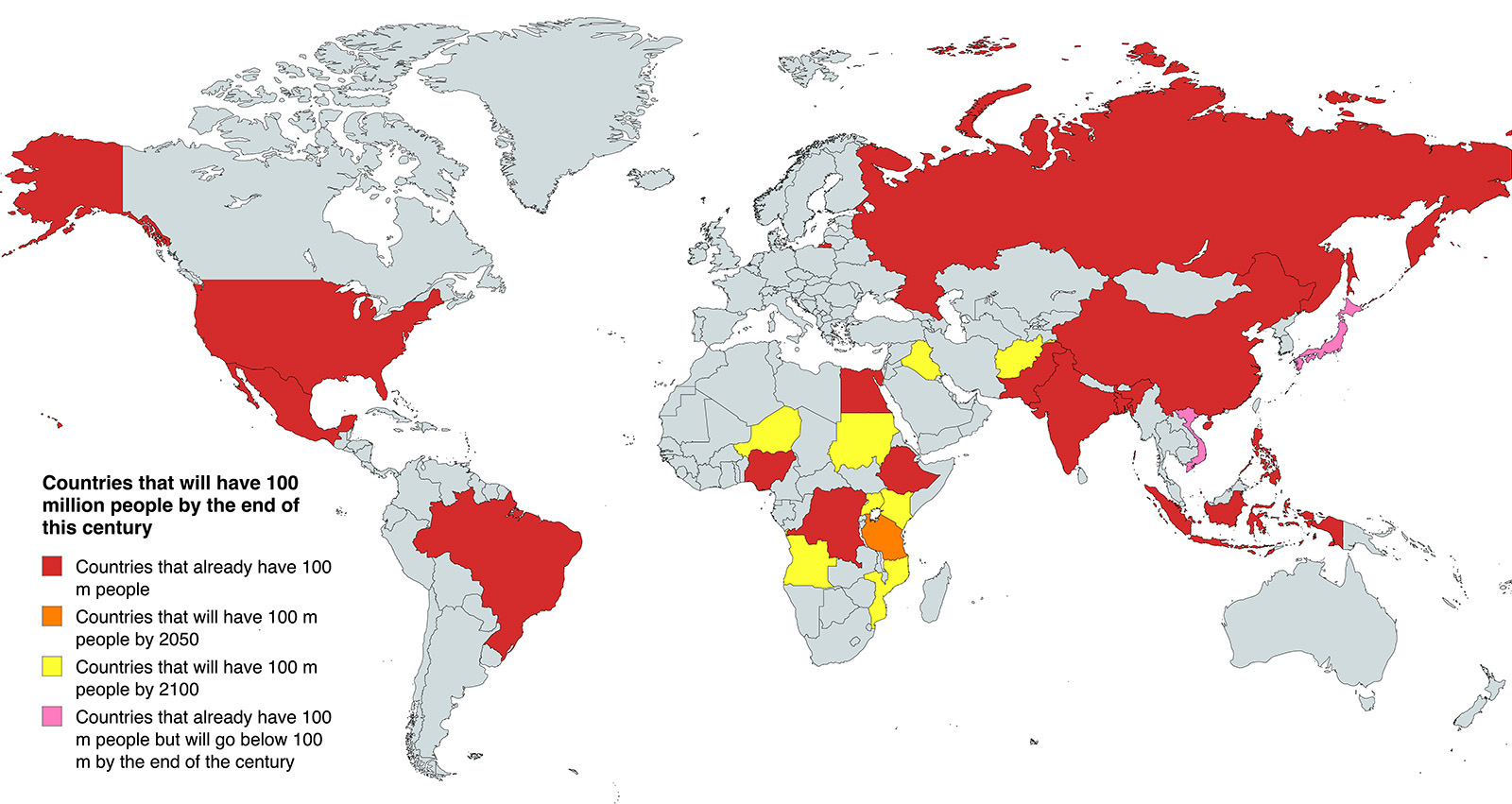Roads Kill: A Global Perspective on Road Traffic Fatalities
Every year, road traffic accidents claim about 1.2 million lives worldwide. That’s more than malaria or HIV/AIDS. But the danger is not spread evenly across the globe. In some countries, roads are relatively safe. In others, stepping onto a road feels like stepping into a war zone.
According to the World Health Organization’s Global Status Report on Road Safety 2023, the global average for road traffic deaths stands at roughly 15 per 100,000 people. Yet this average conceals striking differences—some nations report more than 60 deaths per 100,000, while others have brought the number below 3.
Just take a look at the world map below. The disparities are staggering.

The Dominican Republic, Zimbabwe, and Liberia are at the forefront of most hazardous locations to be on the road, with mortality rates ranging from 35 up to nearly 70 per 100,000 citizens. These statistics would normally be due to poor road infrastructure, few emergency services available, and few traffic regulation enforcements.
At the same time, countries such as Norway, Sweden, and Switzerland have made their roads gold standards of safety. Traffic deaths fall to as low as 2 per 100,000—thanks to decades of policy investment, infrastructure development, and public education.
It raises a pertinent question based on this comparison: What are safer countries doing differently?
Why Are Some Countries Safer Than Others?
There is no single silver bullet when it comes to road safety. Instead, it is the result of many systems working together. Let’s break down a few of the key ingredients that commonly feature in low-death-rate nations:
1. Strong Laws, and the Will to Enforce Them
It’s not just a question of having speed limits, helmet laws, and drunk-driving penalties–it’s a question of enforcing them consistently. Traffic police in most low-fatality countries are trained, equipped, and backed by a system of justice that rewards action.
2. Smart Road Design
Safe nations design roads for human fallibility. That is, with visible lanes, pedestrian crossings, speed bumps on school zones, guardrails, roundabouts, and well-lit intersections. In Sweden, the world-famous “Vision Zero” approach expects people to make mistakes—but the roads are designed in such a way that people’s mistakes will not kill them.
3. Public Awareness and Culture
Driver culture, rather than regulation per se, dictates the way people drive. Residents of nations where the road toll is low are more likely to wear seatbelts, respect pedestrian crossings, and avoid the use of mobile phones while driving. Such attitudes are the product of extended periods of safety-focused social norms and educational campaigns.
3. Access to Emergency Care
Even where there are crashes, response time is the difference. In rural areas of poor countries, it may be hours before victims get medical help. In wealthier nations, well-equipped emergency squads can make all the difference between life and death.
All these reinforce each other. Safe roads encourage safe behavior. Good laws engender a culture of responsibility. Prompt response gives a second chance.
The Global Trend: A Step in the Right Direction?
Despite the sobering figures, all is not lost. Total road traffic deaths have declined in recent years—down from 1.35 million in 2016 to 1.2 million in 2023, according to the WHO.
So what’s behind the trend? Progress in vehicle safety norms, better public transport, greater awareness of urban planning, and a wider application of evidence-based policy.
But the pace is uneven. The low- and middle-income nations account for 93% of all road deaths, though they possess only some 60% of the world’s motor vehicle fleet. The imbalance is not skill behind the wheel but availability of safer roads and access to means.
To reduce road killings, the world doesn’t need to reinvent the wheel. We already know what works. Those countries that made it happen did so through some combination of political will, engineering, education, and emergency planning. They offer a template—a blueprint, literally—for others to follow.








